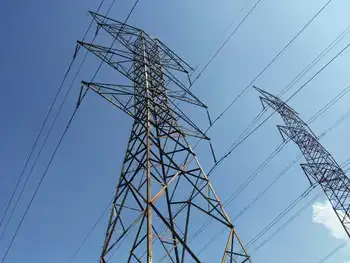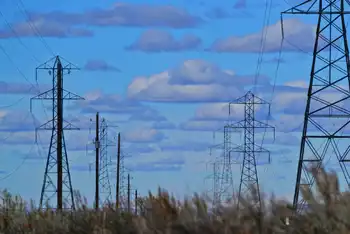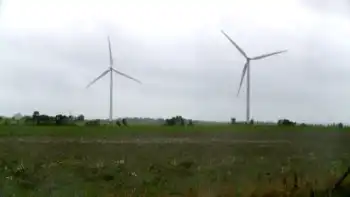New Tech Needed to Control Climate Change
CHAMPAIGN-URBANA, IL -- - Major reductions in carbon emissions from the energy sector will control global warming despite what skeptics say about climate uncertainties, a new study concludes.
Admittedly, researchers do not know exactly how sensitive the Earth's climate is to carbon, said Atul Jain, professor of atmospheric sciences at the University of Illinois. Nevertheless, the data indicate the planet's mean temperature will increase by 1.5 to 4.5 degrees Celsius if the amount of carbon emissions doubles, he said. "Some scientists tell us to reduce the uncertainty before taking action," Jain said. "But my paper says no matter what the uncertainty is, we have to take action now." Using the 1.5-degree Celsius sensitivity, Jain estimates more than 75 percent of the United States' primary power will have to come from sources that do not emit carbon dioxide to restrain global warming to about 2 degrees Celsius over the next 150 years. As reported in the March 28 issue of the journal Science, when researchers plugged in the high estimate of sensitivity, they found almost all energy will have to come from technologies that do not release carbon dioxide. "We have to have other means of energy," he added. "At this time there are a number of alternatives such as solar power, but we need new technology." "This helps us put into context what the electricity sector needs to do," said Katherine Silverthorne, director of the climate change program at the World Wildlife Fund in Washington. "It's time for electric companies to make a switch and embrace clean and renewable energy." The electric sector is responsible for about 40 percent of U.S. carbon dioxide emissions, she said. According to Department of Energy figures, this type of emission accounts for 84 percent of greenhouse gases, contributors to global warming. "Overall it's not really new," said Ben Preston, senior research fellow at the Pew Center on Global Climate Change in Arlington, Va. "The interesting thing is that the authors have couched this in terms of how much emissions the energy infrastructure has to cut." What people need to remember, however, is non-fossil fuel emissions do not mean emissions from renewables only, Preston said. "This could include carbon sequestration or increasing fuel efficiency," he explained. "It doesn't necessarily mean abandoning energy as we know it. There's some flexibility there." It is possible to reduce carbon emissions by 75 to 100 percent, Preston commented, but such a goal will require a proactive attitude. He said investment in technology research and development must be considerable and must include mandatory caps on greenhouse gas emissions.
"Some scientists tell us to reduce the uncertainty before taking action," Jain said. "But my paper says no matter what the uncertainty is, we have to take action now."
Using the 1.5-degree Celsius sensitivity, Jain estimates more than 75 percent of the United States' primary power will have to come from sources that do not emit carbon dioxide to restrain global warming to about 2 degrees Celsius over the next 150 years.
As reported in the March 28 issue of the journal Science, when researchers plugged in the high estimate of sensitivity, they found almost all energy will have to come from technologies that do not release carbon dioxide.
"We have to have other means of energy," he added. "At this time there are a number of alternatives such as solar power, but we need new technology."
"This helps us put into context what the electricity sector needs to do," said Katherine Silverthorne, director of the climate change program at the World Wildlife Fund in Washington. "It's time for electric companies to make a switch and embrace clean and renewable energy."
The electric sector is responsible for about 40 percent of U.S. carbon dioxide emissions, she said. According to Department of Energy figures, this type of emission accounts for 84 percent of greenhouse gases, contributors to global warming.
"Overall it's not really new," said Ben Preston, senior research fellow at the Pew Center on Global Climate Change in Arlington, Va. "The interesting thing is that the authors have couched this in terms of how much emissions the energy infrastructure has to cut."
What people need to remember, however, is non-fossil fuel emissions do not mean emissions from renewables only, Preston said.
"This could include carbon sequestration or increasing fuel efficiency," he explained. "It doesn't necessarily mean abandoning energy as we know it. There's some flexibility there."
It is possible to reduce carbon emissions by 75 to 100 percent, Preston commented, but such a goal will require a proactive attitude.
He said investment in technology research and development must be considerable and must include mandatory caps on greenhouse gas emissions.
Related News

EU draft shows plan for more fixed-price electricity contracts
BRUSSELS - The European Union wants to expand the use of contracts that pay power plants a fixed price for electricity, a draft proposal showed, to shield European consumers from big price swings.
The European Commission pledged last year to reform the EU's electricity market rules, after record-high gas prices, caused by cuts to Russian flows, sent power prices soaring.
A draft of the EU executive's proposal, seen by Reuters on Tuesday and due to be published on Mar. 16, steered clear of the deep redesign of the electricity market that some member states have called for, suggesting instead limited changes to…




